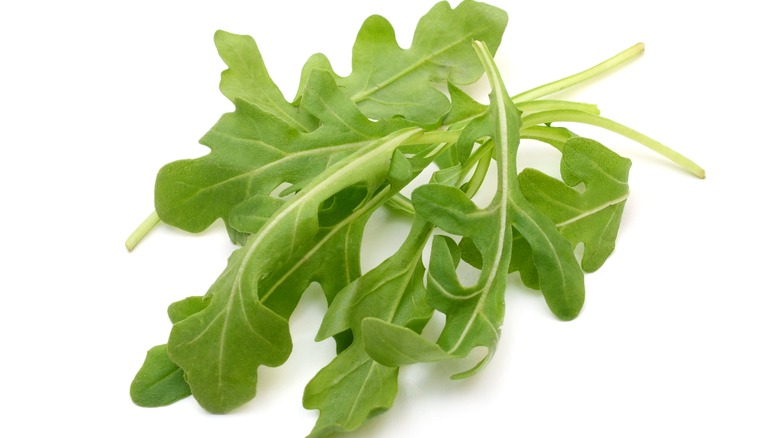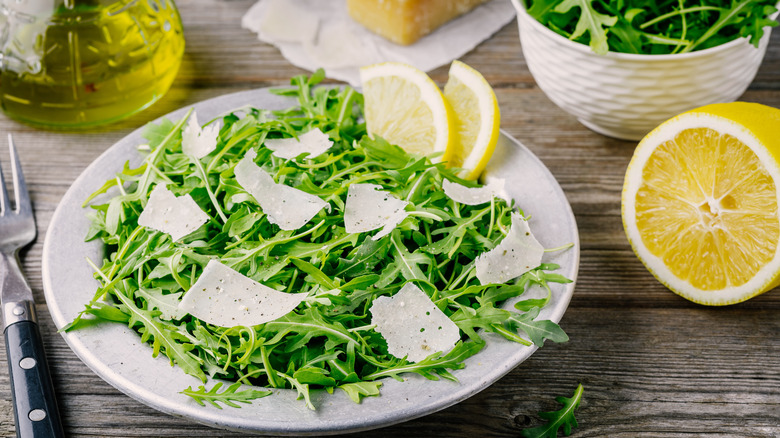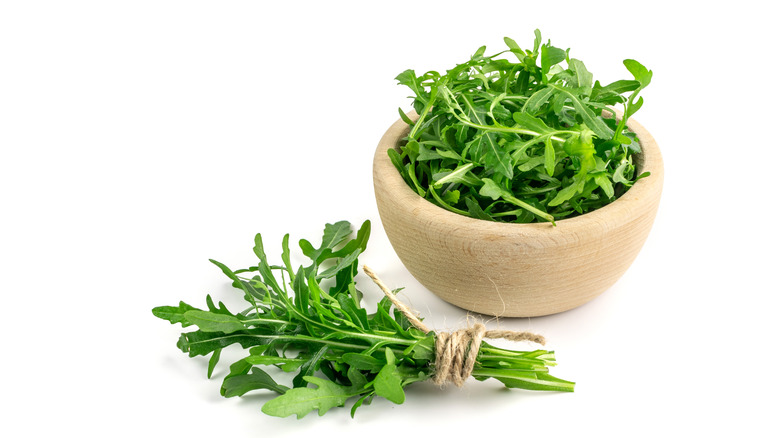How Does Baby Arugula Compare To Regular Arugula?
Imagine you're trying to fit more leafy greens into your diet. You find a delicious-sounding recipe for seared yellow wax beans and arugula and head to the supermarket. When you get to the lettuce aisle, you pause. Right next to the arugula, there's a nearly identical package labeled "baby arugula." Which one do you choose?
As you may have guessed from the name, baby arugula is just arugula, that is, well, baby. Baby arugula and arugula are the same plant; they're just harvested at different levels of maturity. Baby arugula is picked between 3 to 4 weeks of growth, while arugula is picked between 5 to 7 weeks. Arugula microgreens, the most baby of all, are harvested younger than three weeks.
Arugula is known for its bold, spicy kick, which comes from glucosinolates, a natural compound found in many members of the brassica family. Though they sprout from identical seeds, baby arugula has a noticeably milder flavor and more delicate texture than its full-grown counterpart.
How to use baby arugula
For most applications, arugula and baby arugula can be used interchangeably. You'll just want to pick up baby arugula when looking for a slightly less intense flavor. And if full-grown arugula has always been too much for your palate, the gentler baby arugula may lead you to rethink your relationship with this particular peppery plant.
Arugula can be served raw, wilted, or fully cooked. This green, baby or mature, is often used as a piquant base for flavorful salads. It can also be served on top of pizzas, tucked into sandwiches, or made into pesto. Cooking this green is one way to tone down the mustardy spice flavor — to do so, try tossing it into soup or sautéing it in a pan with a bit of olive oil. To wilt arugula, use gentle heat to partially cook the greens by mixing it into freshly-cooked pasta or stirring it into a warm grain salad.
Baby arugula and arugula nutrition
Arugula and baby arugula are both nutritional powerhouses. These greens are both low in calories and good sources of vitamins A, C, and K, as well as iron, calcium, and beta-carotene. They also contain fiber, antioxidants, and small amounts of protein. The glucosinolates responsible for arugula's spicy kick also have health benefits; according to WebMD, there is evidence that they support cell health and regeneration.
The nutritional difference between baby arugula and mature arugula isn't yet well-documented, but a 2021 study out of Rutgers University compared the nutritional values of another green: young and mature spinach. The study found that the younger greens were more nutrient-dense than mature ones, but the older ones contained more fiber. If the same can be assumed for arugula, it would seem that although slight nutritional differences may be present, both arugula and baby arugula are healthy choices with many nutritional benefits.


